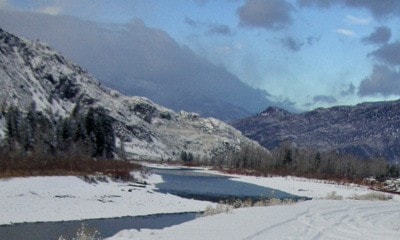Water license holders and other interested groups are invited to meet with the Similkameen Valley Planning Society (SVPS) directors and water study consultant, Hugh Hamilton PhD from Summit Environmental Consultants Inc., to offer suggestions for the Similkameen Watershed Project. The meeting is going to be held at 2 p.m. on Friday, March 25 in the Keremeos Village Office, 702-4th Street. As there is limited space in the Council Chambers, anyone planning to attend must let the SVPS know that they are coming either by emailing similkameen@nethop.net or phoning 250-499-5566.
Summit Environmental (www.summit-environmental.com) has recently been awarded the $15,000 contract for the initial phase of the Similkameen Watershed Project. As Principal Investigator and Project Manager, Hamilton will be leading a team of technical experts who will be working on the project which should be completed by the summer.
The initial phase is a first step guide on how to develop a science based water management plan. The key tasks in the initial phase will be to identify current and potential future water usage related to quantity and quality, potential for water pollution from ground and industrial sources and technical and other information needed for a short and long range planning strategies for the Similkameen Watershed.
“We’re providing advice on the technical aspects that the planners will use to make plans for the watershed,” says Hamilton.
The first task will be to review recent and on-going initiatives especially in dry areas where there is stress related to climate change. Hamilton and his team will also be looking at the unique aspects of a watershed with an international river, identify recent and on-going academic research in the area and identify data gaps.
According to Hamilton, the Similkameen has four stream flow stations which, compared to much of B.C., is good plus there are other studies which can supply information.
“It may be this perceived lack of information may not be as bad as people think,” says Hamilton.
Once all the facts are gathered there will be a meeting to brainstorm and come up with terms of reference for the watershed planning strategy.
Hamilton says the scope of a technical assessment can vary considerably.
“There are lots of different views and values associated with water,” says Hamilton. “These include practical, cultural and spiritual aspects.”
Having stakeholders input at the beginning of the planning process is potentially very positive.
“I think that it’s terrific because it will perhaps save some time and effort later,” says Hamilton. “I see this meeting as me listening rather than me talking.”
